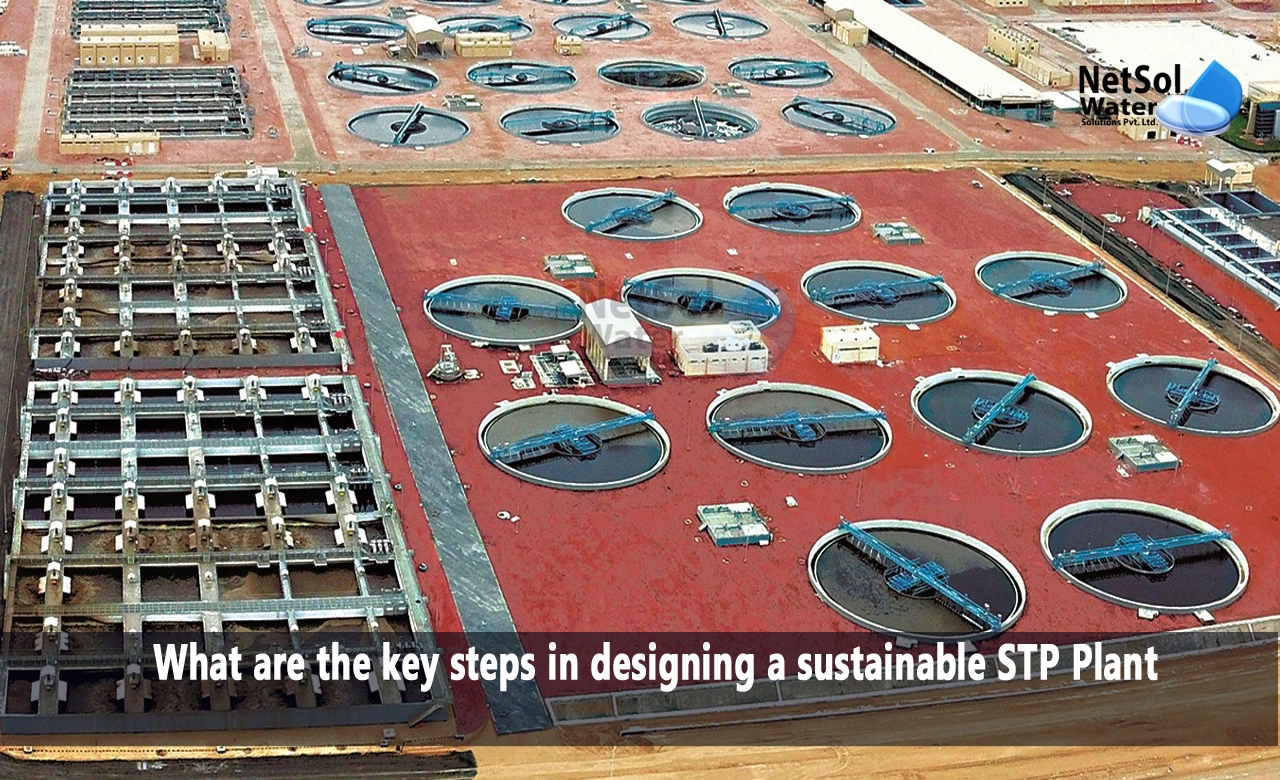What are the key steps in designing a sustainable STP Plant?
In this day and age, creating a sustainable Sewage Treatment Plant (STP) is not an option, but a need. Sustainable wastewater treatment plants not only decrease the environmental effect of wastewater treatment, but they also maximize resource utilization and lower long-term operational costs. In this blog, we'll look at the important phases in developing a sustainable STP.
1. Complete Site Investigation: Before beginning the design of a STP, a complete site investigation is required. Consider the geography of the location, its closeness to water bodies, available space, and soil conditions. Understanding these aspects will aid in the selection of the best technology and layout for the facility.
2. Establish Sustainability Goals: The first step in developing a sustainable STP is to establish your sustainability goals. What environmental and social goals do you want to achieve? Common sustainability goals include lowering energy use, reducing water usage, and improving the facility's overall ecological impact.
3. Select the suitable Treatment Technology: Choosing the suitable wastewater treatment technology is a critical decision. Biological treatment procedures such as activated sludge, oxidation ponds, and artificial wetlands are examples of sustainable solutions. Advanced technologies such as membrane bioreactors (MBRs) and sequencing batch reactors (SBRs) can also contribute to increased sustainability.
4. Improve Energy Efficiency: For STPs, energy consumption is a substantial operational cost. Incorporate energy-saving features such as variable-speed drives for pumps, energy recovery systems, and on-site renewable energy sources such as solar panels or wind turbines.
5. Implement Water Reuse and Recycling: Water conservation is a key component of sustainable STPs. Include water reuse and recycling systems that allow cleaned water to be recycled for non-potable uses such as irrigation, cooling, or industrial activities. This not only saves water but also minimizes the volume of output.
6. Lessen Chemical consumption: To lessen the environmental effect of the treatment process, chemical consumption should be reduced. Investigate the use of environmentally friendly chemicals and, where possible, combine measures such as efficient coagulant dosage and chemical-free treatment approaches.
7. Emphasize Sludge Management: Sustainable STPs efficiently address sludge management. Through procedures such as anaerobic digestion or composting, sludge may be turned into useful resources. Sludge management that is effective not only eliminates waste but also offers potential cost savings.
8. Resource Recovery: A sustainable STP looks for ways to recover valuable resources from wastewater. Phosphorus and nitrogen, for example, may be removed and utilized as fertilizers from wastewater. Implementing resource recovery technology advances the ideals of the circular economy and sustainability.
9. Green Infrastructure and Landscaping: Include green infrastructure and landscaping features on the STP grounds. Wetlands, green roofs, and vegetated swales not only look nice but also provide ecosystem services including stormwater management and animal habitat.
10. Encourage Biodiversity: Promote biodiversity by including habitat-friendly designs inside and outside the STP. This may involve the creation of wetlands and the planting of natural plants, which attracts birds and insects and thereby benefits the local environment.
11. Operator Training and Education: Well-trained personnel are essential for the STP's long-term operation. Ensure that operators are taught in environmentally friendly operations, energy conservation, and sustainable practices.
12. Ongoing Maintenance and Monitoring: Ongoing maintenance and continual monitoring are required to guarantee the STP's long-term operation. Create a detailed maintenance program to keep the equipment and systems in good working order.
13. Public Awareness and Engagement: Engage with the local community and promote awareness about the STP's sustainable practices. Open homes, educational events, and tours may all aid in the development of support and understanding.
14. Regulation Compliance: Make certain that your sustainable STP conforms with local, regional, and national rules. Environmental restrictions exist to safeguard natural resources, and compliance is mandatory.
15. Performance Evaluation and Reporting:Establish key performance indicators (KPIs) to assess the long-term viability of your STP. To demonstrate your commitment to sustainable wastewater management, report on your progress toward sustainability targets on a regular basis and share these reports with stakeholders.
Conclusion
Developing a sustainable Sewage Treatment Plant (STP) necessitates a multifaceted strategy that takes into account environmental, social, and economic factors. Sustainable STPs not only minimize environmental impact, but they also save operating costs, improve resource recovery, and contribute to a greener, more resilient future. Your STP may be a shining example of sustainable wastewater management and serve as a model for others to follow if you follow these essential steps and take a comprehensive approach.




